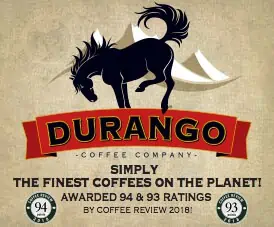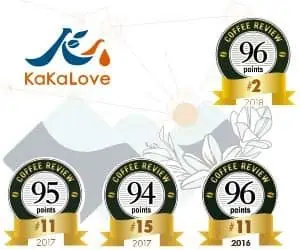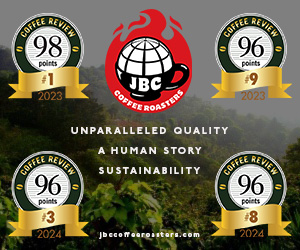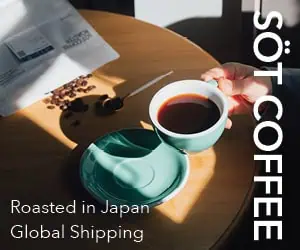Wet-hulling is not an obscure Olympics sailing event nor (at least to my knowledge) a special trick in waterskiing or wakeboarding. It is a fruit removal and drying variation that contributes much of the distinct character of traditional Indonesia coffees, particularly those from Sumatra and Sulawesi. It is also practiced on other Indonesian islands, almost everywhere in Indonesia where small holders produce the coffee. In Sumatra it is called “giling basah” in local Batak languages.
Recall that in traditional wet-processing, the skin and pulp of the coffee fruit is removed from the “beans” or seeds in several stages after which the beans are dried to about 12.5% moisture, whereupon they are stored encased in the remaining dry, crumbly “parchment skin” until they are ready to be shipped. It is only at that point, well after drying has been completed, that the parchment skins are removed.
In the wet-hulling variation of wet-processing the soft fruit residue is removed by small producers as it is elsewhere, by removing the skins from the fruit, loosening the sticky fruit flesh through fermentation, then washing the loosened flesh off the beans. However, in the wet-hulling variation the parchment skins are removed in the middle of the drying process, when the beans still retain somewhere between 20% to 40% moisture. The beans are dried the rest of the way, to 12% to 13%, after parchment removal. This atypical practice is additionally complicated by an unusual supply chain in Indonesia, one in which the fruit removal and a first drying is usually performed by small producers, after which collectors bring the partly dried coffee to a mill where it is dried a bit more before being hulled at 20% to 40% moisture. Final drying to 12% to 13% moisture may take place at the mill or in the port before the coffee is shipped.
Contributing Depth without Domination
Somewhere along the line, probably during the prolonged serial steps in drying, the beans pick up a slight mustiness that contributes the characteristic fruit-toned “earthiness” for which Sumatras are famous. Up to ten or twelve years ago the problem was finding specific lots of Sumatra that expressed this accidental flavor complex sweetly and pleasingly rather than harshly; in other words, finding lots that tasted richly earthy rather than overbearingly musty.
Over the past ten years the wet-hulling process has been refined, particularly in Sumatra, to the point that the earth note is backgrounded and transformed, bringing a rich, sweet pungency that deepens and grounds profiles without dominating them. At times one can call this sensation earthy in the sense that it suggests sweet humus or moist fresh-fallen leaves; just as often it provokes associations like pipe tobacco, fresh-cut cedar or fir, or spice notes like pink peppercorn and clove. Influenced by this pungent base are fruit and floral suggestions, with the whole aromatic package usually supported by a cleanly expressed structure of sweet-toned acidity and silky to syrupy mouthfeel.
Ten Good Ones
This month we review ten such wet-hulled coffees, nine from Sumatra and one from Sulawesi, all expressing refined variations on this sweetly pungent, wet-hulled theme. Four additional samples, all Sumatras, attracted ratings of 90 through 91, but are not reviewed here. The disappointing news, perhaps, is the absence of wet-hulled samples from islands other than Sumatra and Sulawesi. I would guess that the probably costly efforts to refine the wet-hulled process are only worth the focus and investment when an exporter is working with an already well-known and celebrated origin like Sumatra, or at the very least, Sulawesi.
Consult the Fine Print
Those readers interested in exploring the sensory character of these coffees would do well to look at the blind assessment paragraphs of the ten reviews associated with this article carefully. Although several reviews make allusion to hints of moist, fresh-fallen leaves or deploy similar foresty descriptors, specific profiles differ greatly, dramatically even. Details of wet-hulling vary, lot by lot, and botanical variety, although only beginning to be reflected in market descriptors in Sumatra, may be at work in the background as well, along with the even less-understood impact of subtly varying terroirs. Plus, of course, roast is crucial in differentiating these samples, perhaps even more crucial than it is in respect to influencing the character of more conventional coffee profiles.
The PT’s Silimakuta AAA Sumatra (93) displays perhaps the most explicit (though still quietly integrated) earth notes of the ten reviewed samples; the fusion of this gently stated suggestion with more conventional chocolate and apricot- and raisin-like fruit notes nets an engaging expression of the wet-hulled style. By comparison, neither the top-rated Papa Lin’s Lake Toba Peaberry (94) nor the Equator Sumatra Ulos Batak (94) appear to exhibit explicit earth-related notes, yet both display variations that in my experience reflect the impact of wet-hulling: the particularly zesty and pungently grapefruity character of the Equator, and the spice and herb innuendoes complicating the softly lush, floral and stone-fruit of the Papa Lin’s. Other reviewed samples range from the more delicate, nutty and crisp (the Bird Rock Sumatra Ulos Batak, 93, for example) to the Kenya-like dry berry, citrus and chocolate of the Seattle Coffee Works Sumatra Ulos Batak (93).
A Little Farther Back in the Pack
Of course, not all of the wet-hulled Sumatras we sampled were quite as successful as the ten reviewed here, or the additional four not reviewed that rated 90 to 91. The complex set of processing procedures involved with wet-hulling, performed in different places by different parties, must make achieving consistency difficult. Ever since the new, more refined style of wet-hulled Sumatras started appearing on the market a decade or so ago I’ve been amazed by the achievement of cooperative leaders, exporters and others in achieving the consistency represented by the best of these engaging and original coffees.
Returning to the samples not reviewed here, we tasted only one outright tainted sample, although several more showed mild inconsistencies from cup to cup. We sampled a couple of the more generic style of “Mandheling” Sumatras displaying the older style of explicit earthiness that can come across as broodingly rough and robust in darker roast styles, but in the currently fashionable medium roasts simply comes across as, well, rough. Other samples seemed to have suffered during green coffee storage and transport (always an issue with Indonesia coffees) and showed up tasting a bit dull and woody.
Two Good Bets
Some well-known green coffee names representing the new refined style of Sumatra were absent from this cupping, perhaps because of timing or availability issues. Of those green coffee names or brands that did appear in our lab this month and rated well, the two most frequent to appear were the “Ulos Batak” branded Lintong-region coffees from the cooperative exporter Klasik Beans, and two excellent samples (both certified organically grown) from the Ketiara Cooperative located in the Aceh growing region at the far northwestern tip of Sumatra.
* Photo courtesy of Crop to Cup Coffee










